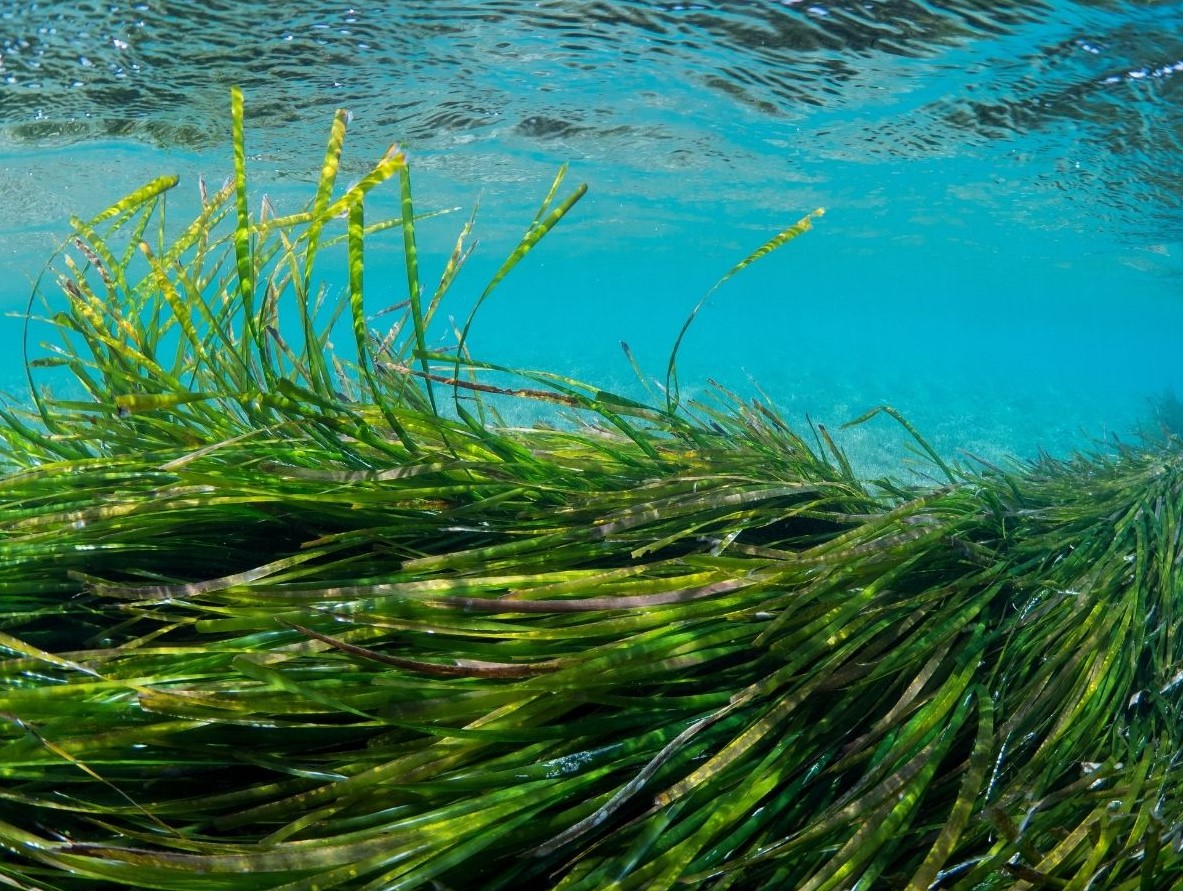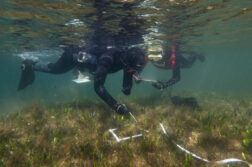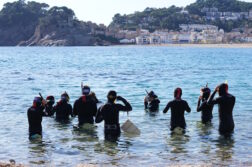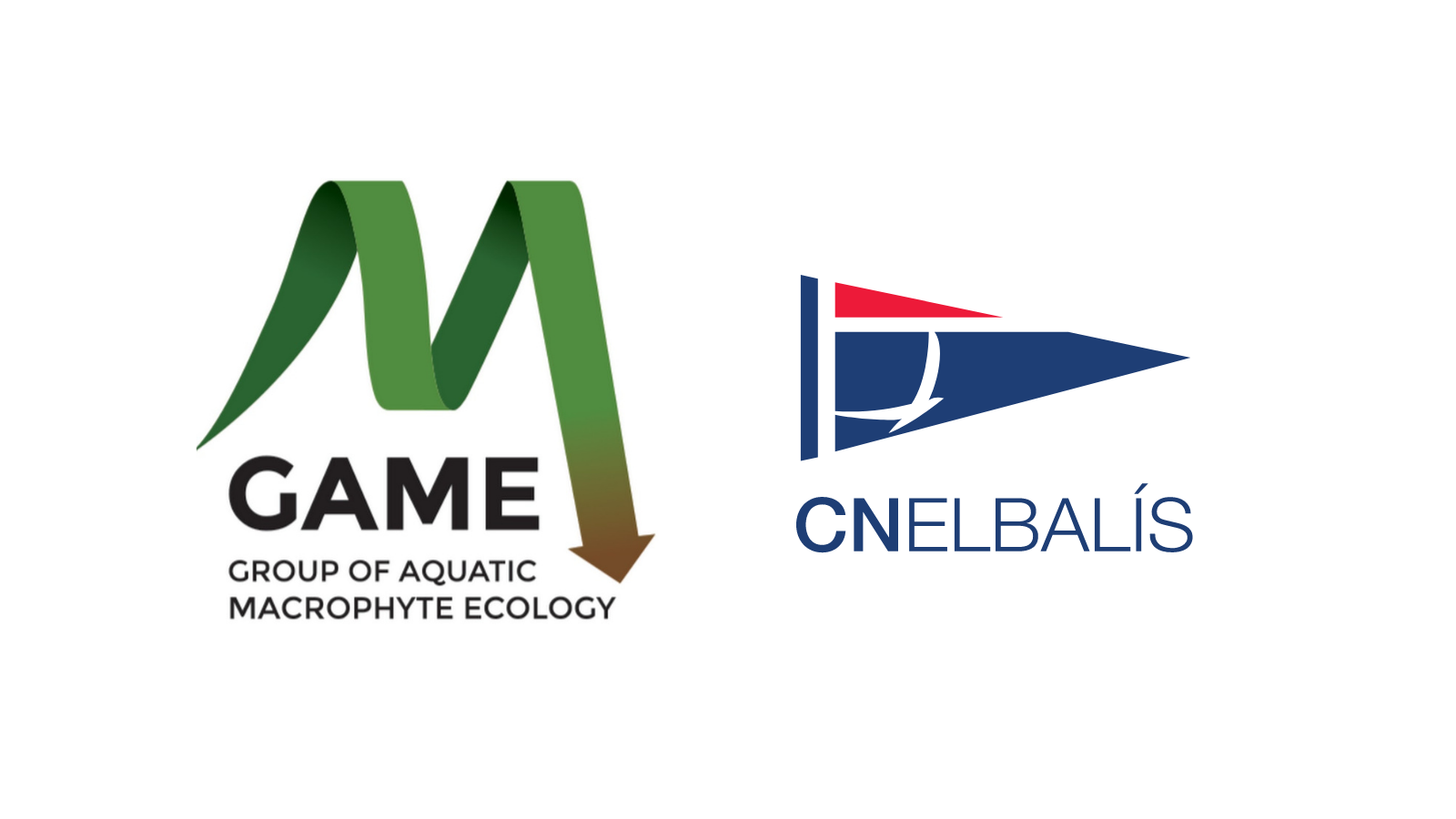The Group of Aquatic Macrophyte Ecology (GAME) of the Blanes Centre for Advanced Studies and Marilles Foundation have today published the results of a study showing that the Illetes Posidonia meadow, in Calvià (Mallorca), is more than 2,000 years old. It is hoped that the results will help to value and protect this natural asset and the multiple services and benefits it provides to Balearic society and the economy.
Posidonia meadows help mitigate climate change because they are very efficient organisms at sequestering and storing carbon and at the same time, they help us reduce the impact of its consequences. In shallow coastal areas, they can attenuate the force of the sea and thus protect our coasts from erosion and the effects of extreme storms, increasingly frequent in the current scenario of global warming.
The Illetes Posidonia is 2,355 years old and has an estimated growth of 0.5 mm/year
Sampling was carried out in July 2021 in the area of Illetes and Portals Nous cove.Cores were extracted and subsequently analysed to determine the age and amount of carbon stored. The results show that the Illetes (Calvià) Posidonia is 2,355 years old and has an estimated growth of 0.5 mm/year.

The corrected age for the meadow at Portals Nous (Calvià) is much lower (128 years) with a growth of 5 mm/year (ten times faster) The reason for this difference is that the sample taken at Portals Nous grows on a rocky base, which prevents it from accumulating sediment for so many years. However, it has likely been present there for thousands of years.
“The research carried out in the Comtesa and Portals Nous coves of Calvià confirms that their meadows date back thousands of years. During these years they have been providing irreplaceable and invaluable services to the society that lives in and from the coastal resources of Mallorca. Any effort to prevent the deterioration and destruction of this unique ecosystem or to improve the quality of its habitat will undoubtedly benefit everyone in the medium and long term. If we continue as we have been doing, in a few decades we will likely lament the loss of practically all the Posidonia meadows and their associated services. This loss could be irreversible”, explains Dr. Miguel Ángel Mateo from CEAB.
The volume of carbon stored by each hectare of 1m-thick Posidonia is about 1,600 tonnes of CO2for both meadows. This amount is equivalent to what 1,000 cars emit in a year. The Balearic archipelago has 650 km2of Posidonia, i.e., half of all Posidonia in Spanish waters. This area absorbs 7% of the emissions emitted by the Balearic Islands.
‘The loss of Posidonia has a double impact on climate. Not only do we stop sequestering carbon, but the carbon deposits that have been stored until now can be released into the water and the atmosphere, so that we have new CO2emissions that we are not counting on now. National carbon reduction plans should take into account the carbon emissions resulting from the loss of Posidonia over the last number of dècades“, says Núria Marbà, IMEDEA researcher and collaborator of the study.
We need to work on coastal management policies that reduce risks and improve the health of Posidonia meadows
For thousands of years, Posidonia meadows have been providing a multitude of services to Mallorcan society. A study funded by Marilles Foundation in 2019 estimates the value of the Balearic Posidonia meadows at €622 million. This value includes coastal protection (€326.9 million), carbon sequestration and storage (€205 million), and water quality (€85 million), but does not include other services related to fisheries production and biodiversity conservation.
Given the extraordinary slownesswith which Posidonia meadows recover (damaged or destroyed areas take decades to centuries), the loss of any piece of meadow and the valuable services it provides is forever. Coastal management policies that reduce the risks and improve the health of Posidonia meadows must therefore be pursued at local, regional, national, and Mediterranean levels.

Authorship
The study was directed by Dr Miguel Ángel Mateo Mínguez, head of GAME (CEAB-CSIC), with the participation of Dr Oscar Serrano Gras, co-responsible for GAME, the Final Degree Project students (University of Barcelona) Irene Bernabeu Sapena and Enric Gomis Clar, and the collaboration of Dr Núria Marbà from IMEDEA (CSIC-UIB).
The study is available at https://marilles.org/storage/media/2022/05/1240/informe-posidonia-milenaria-en-calvia.pdf
News via: Marilles Foundation





